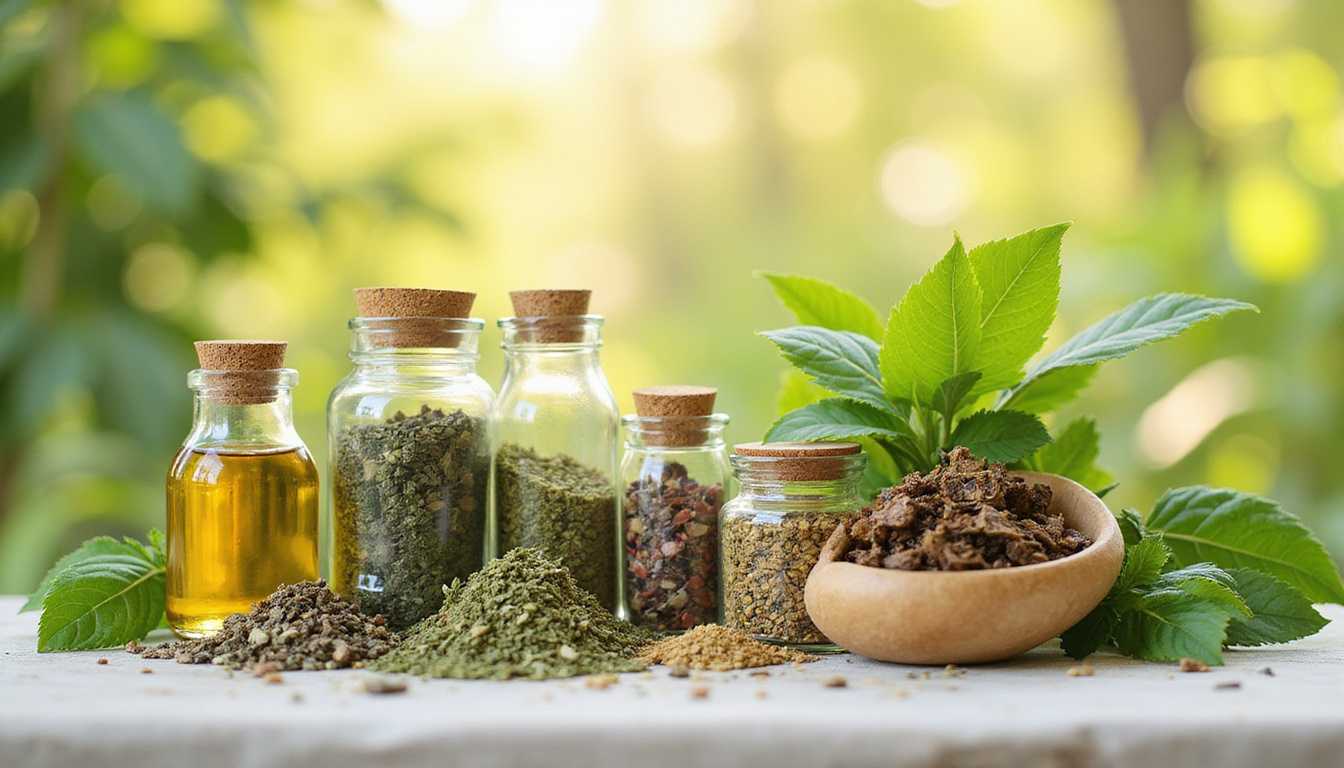
Essential Guide to Crafting Your Own Herbal First Aid Kit: Nature's Remedies for Common Ailments
Share
ESSENTIAL GUIDE TO CRAFTING YOUR OWN HERBAL FIRST AID KIT: NATURE'S REMEDIES FOR COMMON AILMENTS
Make your own herbal first aid kit to treat small health troubles. This kit uses simple plant remedies. It can help you instead of store-bought medicines. This guide shows you how to make a working kit, what to put in it, and how to use the herbs safely.
WHY YOU NEED A HERBAL FIRST AID KIT
A herbal kit gives you a quick way to treat issues at home or when you are outdoors. A regular kit holds bandages and cleaning items. A herbal kit uses plant power to help with small cuts, upset stomachs, and stress. Pick herbs that are strong and easy to get. This way, your kit fits your health needs and your way of life.
THE ESSENTIAL PARTS OF YOUR HERBAL FIRST AID KIT

-
General Supplies
Your kit should have basic tools like:
- Adhesive bandages
- Sterile gauze and tape
- Tweezers and scissors
- Wipes or sprays to clean wounds
- Cold packs that work fast
-
HERBAL REMEDIES FOR COMMON AILMENTS
Here are some herbal parts that can help in many cases:
-
First Aid Salves: Keep two salves in your kit. One works on cuts and helps healing. The other soothes bruises. One with arnica may lower swelling and pain.
-
Digestive Aids: Some herbs help when your stomach is upset. Ginger and peppermint work for nausea, bloating, or indigestion. Ginger in tea or chews can help with motion sickness. Chamomile tea can calm an upset stomach.
-
Tinctures for Immune Support: Echinacea tincture helps your body fight off sickness. Elderberry syrup may cut the length of a cold.
-
Pain Relief: A topical oil made with ginger or cayenne can help muscles or joints feel better.
-
Stress Relief: Teas with chamomile and lavender can bring calm when you feel anxious.
-
Saline Solution: Salt mixed with water serves as a rinse for sore throats, cleaning injuries, or even for washing eyes in an emergency.
-
-
PLANT-BASED NEEDS FOR INFECTIONS AND HEALING
Some herbs work well to stop infections:
- Lavender Essential Oil: Use it on insect bites or small burns. It helps ease pain and keeps germs away.
- Yarrow: In a powdered form or as a tincture, yarrow can help slow bleeding and lower a fever.
-
KEEPING IT FRESH AND ORGANIZED
Check your herbs to keep them strong. Store your kit in a cool, dark place. Look at the items often to throw out any that have expired. A small box with sections can help you keep each item in its place and ready to use.
PERSONALIZING YOUR KIT
Your kit should work for you or your family. Change it for your daily habits, the things you enjoy, or any health needs you know about:
- If someone has allergies, add an item made to ease allergic reactions.
- If you have pets, add a special bandage for them or a salve for skin issues.
- If you often go outdoors, add herbs to help with bites or skin irritations you may get in nature.
MOVING FORWARD WITH CONFIDENCE
Build and care for your herbal kit to mix nature with your care. Choose herbs that work well for you. This will help you treat small hurts without much fuss.
Study each herb, its traits, and how you can get the best results. This study helps you use each plant better and strengthens your trust in natural healing.
With your herbal kit ready, you have a simple way to meet everyday health needs. The kit helps you and your family take small steps to keep well using nature's gifts.
